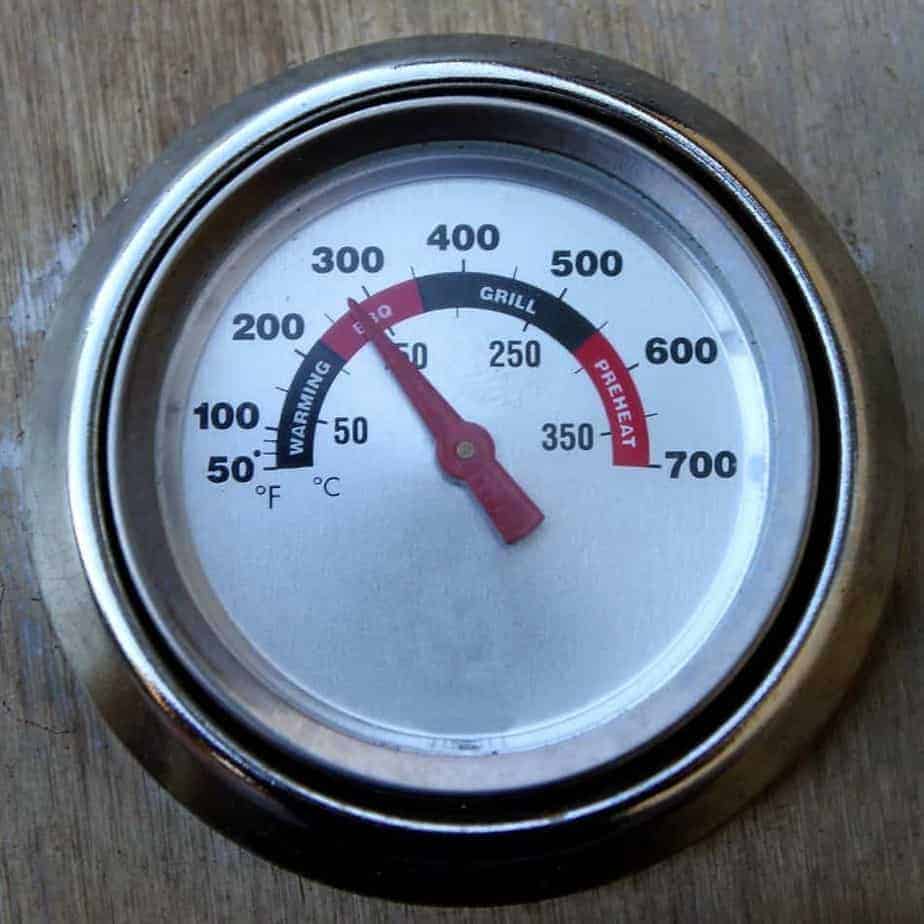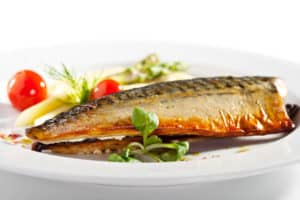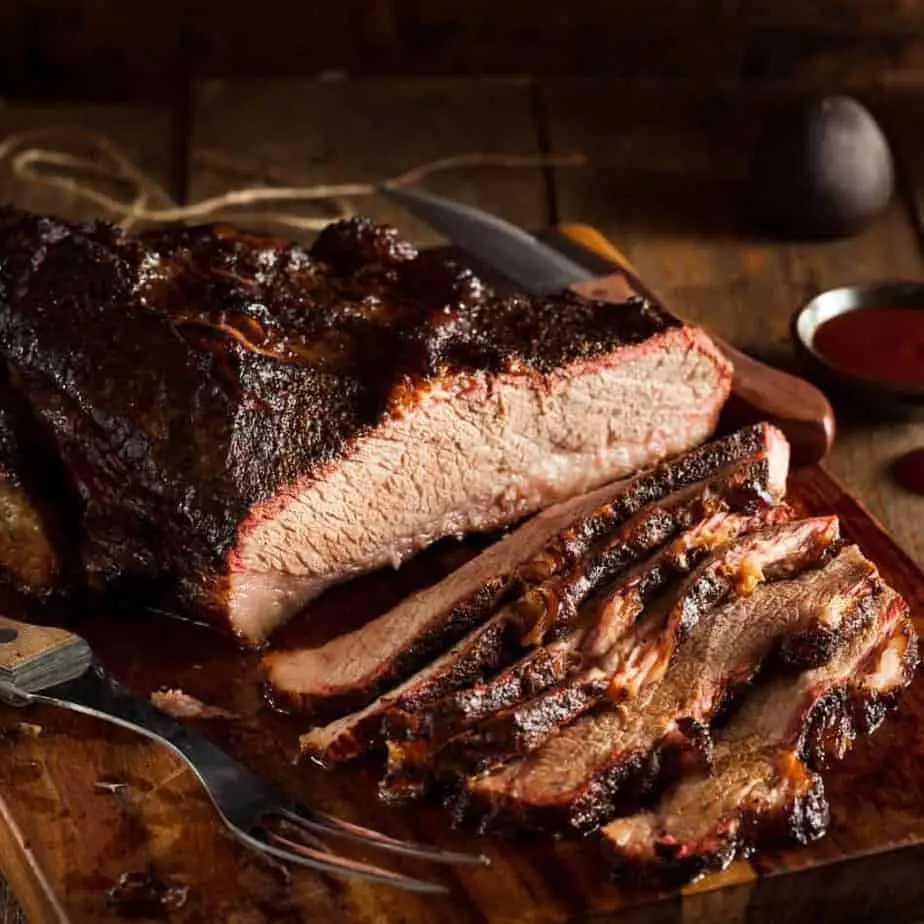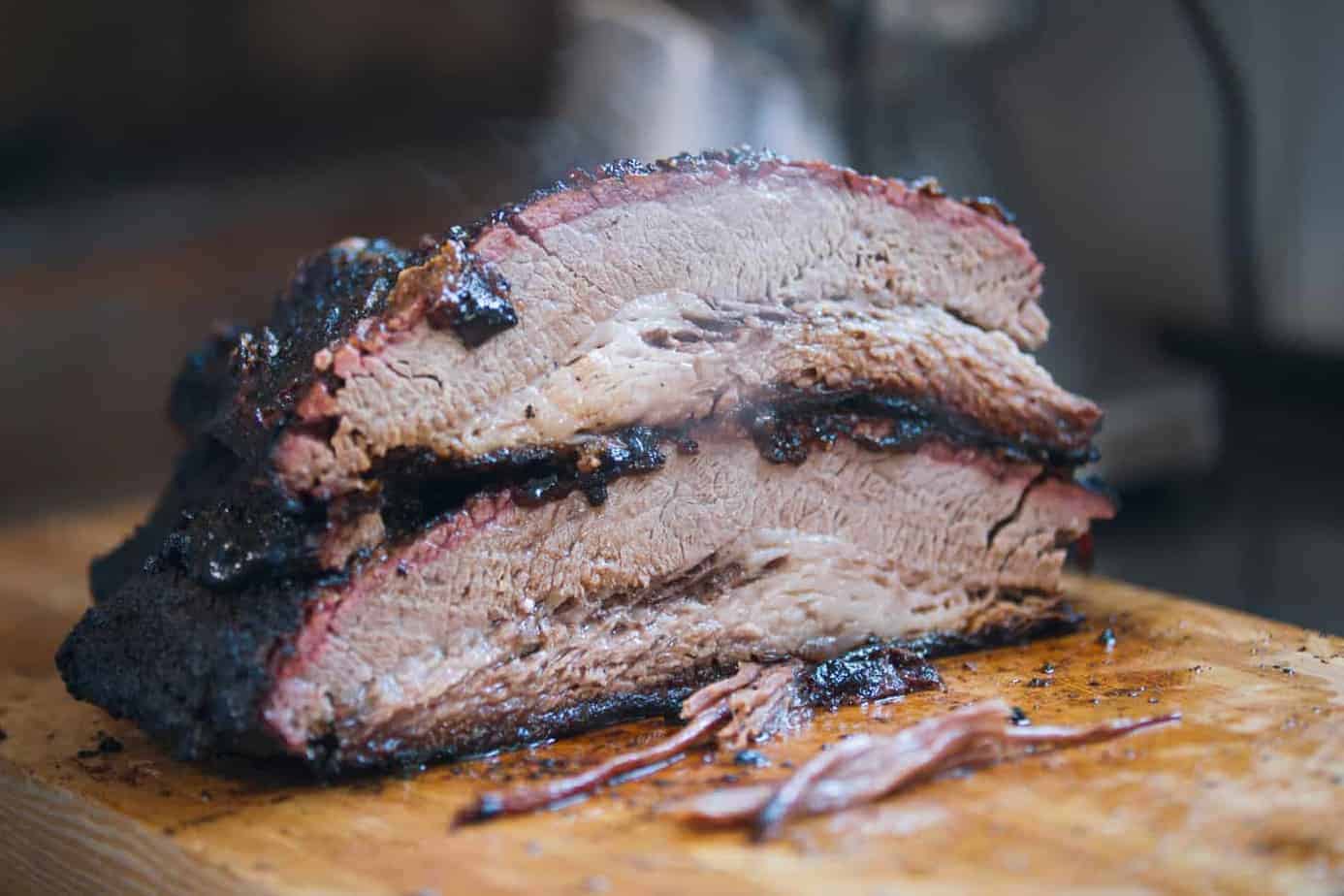Low and Slow or Hot and Fast: What is the Best BBQ Method?
Disclosure: This post may contain affiliate links. If you use these links to buy something we may earn a commission at not additional cost to you. Learn more.
As a BBQ enthusiast, I’ve barbecued meats using several methods. I’ve found it’s always best to try a variety of methods to give myself a nice mix of flavors that each method achieves. You’ll find though, that there is some debate in the BBQ community about which method is actually the best for barbecuing.
What is the best BBQ method, low and slow or hot and fast? Low and slow barbecuing is generally preferred over hot and fast barbecuing since it provides the juiciest and most flavorful meat, ease for the cooker, and holds cultural importance. Consider these key benefits of low and slow barbecuing:
- The meat remains juicy
- The end result is more tender and flavorful
- You are less likely to overcook your meats
- It’s an American pastime for relaxing with family
We’ve got all the pitmaster tips and preferences from years of perfecting low and slow barbecuing, from ideas of rubs and sauces to enhance your BBQ, to the best meat cuts pitched by experts in all the top barbecue regions of the country.
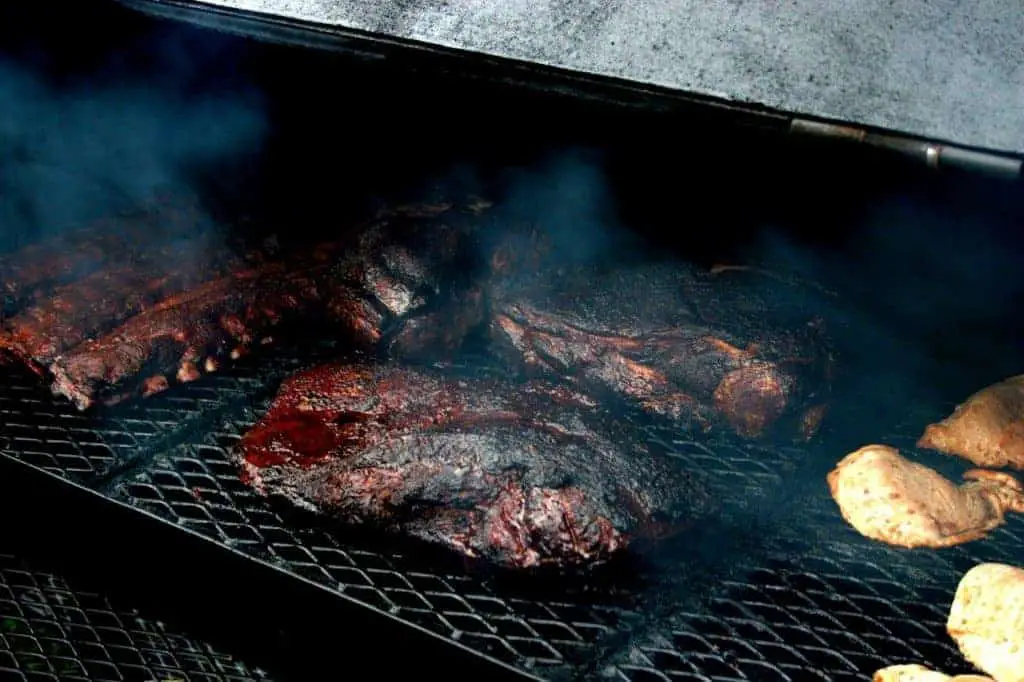
How Does Low and Slow Retain Moisture in Barbecued Meat?
The entire premise of barbecue began as a means to take tougher cuts of meats and make them easier to eat. This process is done by overcooking, and such is the case with low and slow barbecue methods. In the colonial times, it was found that cooking your meat over an indirect heat source for extended periods of time produced a rich, flavorful, and tender meat with a distinctive smoky taste.
A common misconception is that juicier meat means there is simply more water retention when the meat is cooked. This is just not the case. A lot of the juiciness that is experienced with low and slow barbecue techniques has to do with the melted and softened fats, gelatinized collagen, and protein-bounded water.
Holding a cooking temperature of 200-220degrees Fahrenheit, and getting your meat to an internal 180 degrees slowly is the best way to naturally tenderize the meat and maintain a juicy texture. Gelatinized collagen is actually what gives the meat a sweeter flavor when barbecued slowly.
What Is a Stall in Low and Slow Barbecuing?
Many masters of low and slow barbecuing have experienced a “stall†more than a few times when barbecuing their favorite meats. This happens when the meat suddenly stops rising in temperature and is taking way longer than expected to barbecue. What you thought would be a 6-hour barbecued pork butt, ends up being 10 hours plus and your guests are now impatient and hungry. Why is this happening?
There have been many potential explanations for this stall over the years, such as:
- Protein denaturing
- Fat rendering
- A phase change, which relates to the conversion of collagen into gelatin
An actual physicist and Chief Technical Advisor with Bell Labs, Dr. Greg Blonder, spent some time trying to figure out the science behind this stall to figure out the truth. Why? Well, he is a barbecue lover himself, of course. His results found that the “stall†is actually evaporative cooling.
Come to find out, meat sweats and cools itself down, which turns into a battle that prevents the temperature of the meat from rising until all of the moisture is completely used up. This battle can leave you with an overwhelmingly long barbecue time, and much dryer meat.
Read more about Dr. Greg Blonder’s experiments here.
Ultimately, he found that the best way to prevent the stall was to wrap the meat in foil as soon as it was approaching a stall with a small amount of water. The foil created a steamy environment that prevented the meat from sweating and cooling itself. Once it reached the target temperature, he then removed the foil and cooked until the bark was firm.
It cooked in nearly half the time of non-foiled meat, and he reported the meat as being extraordinarily juicy and perfect in tenderness.
Other Factors That Play into Moisture Retention
Slow and low cooking is not the only reason certain meats may retain more moisture than others. Consider the following other factors when browsing for the juiciest meats to barbecue:
- What is the packaged drip loss?
- What is the animal breed?
- What age is the animal?
- How much has the meat aged?
- Was the meat frozen?
- Did you apply a brine?
- Are you using a seasoning that will encourage saliva flow?
- What was the diet of the animal?
- How was the animal tenderized?
Believe it or not, each one of these things plays into whether or not meat will retain moisture and juiciness during the cooking process. The method of cooking is not the only factor.
What is Hot and Fast Barbecue and What Are the Benefits?
There is much debate around hot and fast barbecue. Traditional barbecuing has always been done in a low and slow method. Hot and Fast barbecuing is seen quite commonly within competitions and catering. Depending on who you ask, some will say there is no difference in taste or quality, while others will argue there is a notable difference.
Essentially the meat is cooked at temperatures of 300 degrees Fahrenheit and upwards, although there is no real benefit from this method other than you get to eat your meat in half the time, and it makes it easier for caterers. With the hot and fast method, you’ll probably run into two big pitfalls when barbecuing:
- You’ll have to really pay attention and monitor your meat, so it does not become overcooked.
- Cooking at higher temperatures means your meat will lose moisture much faster and possibly become dry.
This does not mean you can’t cook a tender and juicy meat with the hot and fast method, but it takes a lot of skill and trial and error. If it’s your first-time barbecuing, you’re more than likely going to want to try the low and slow method first just so you can get a feel for how to properly monitor the temperatures and get an idea of what to look out for.
Check out this episode of T-Roy Cooks on YouTube where he talks about Low & Slow vs Hot & Fast barbecuing.
What’s Up with The Hot and Fast Brisket?
If you’ve done any research on the hot and fast style of barbecuing, you’ll find that search engines are basically packed with hot and fast brisket recipes. So, what’s all the hype? Many have written about their experiences with being able to barbecue brisket in as little as 3-4 hours.
Traditionally brisket has always been cooked low and slow, but others have found a very distinct flavor that comes with cooking brisket in a hot and fast manner. It’s tricky, but if you can perfect it, you’ll have a great-tasting and quick brisket meal that won’t take all day.
The main issues with cooking brisket in a hot and fast manner are that the meat tends to become charred pretty quickly, and it remains tough and chewy after the fact.
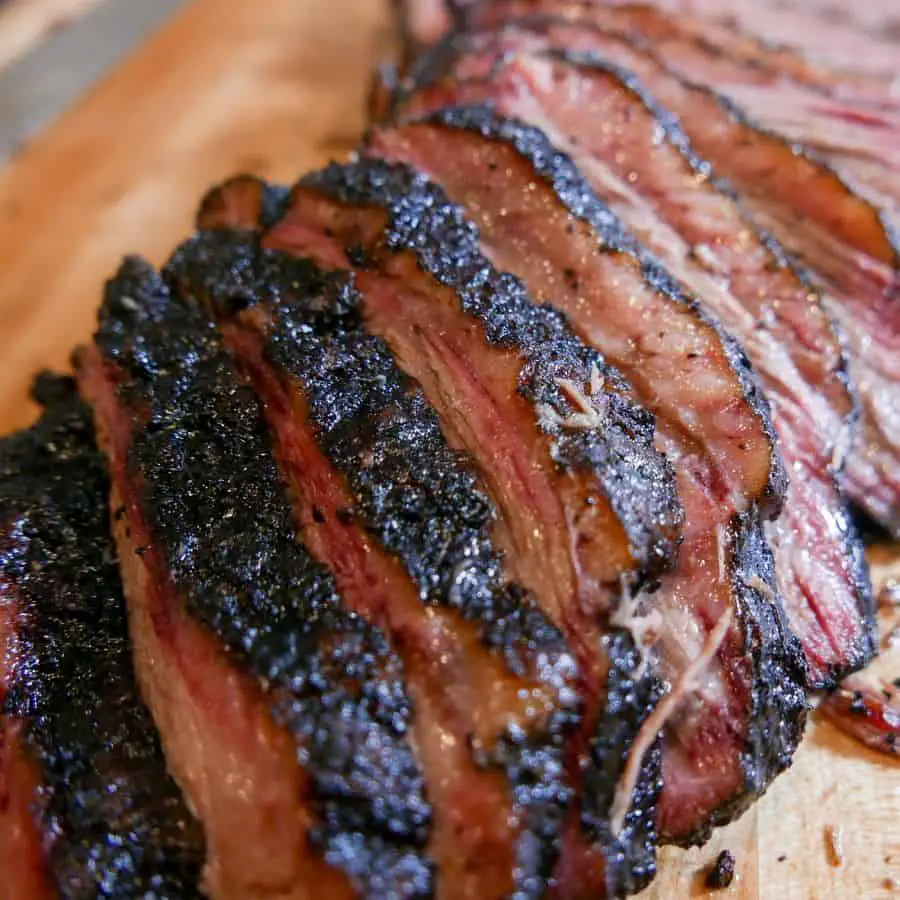
Hot and Fast Barbecue Recipes
Brisket isn’t the only meat that can be cooked up beautifully using the hot and fast method. Gateway Drum Smokers features a few recipes by some ICP champions that use the infamous drum smokers for barbecuing other tantalizing meats. Check them out below.
This recipe will walk you through on how to hot and fast BBQ a pork butt to perfection using a wrapping technique and Blues Hog Tennessee Red BBQ sauce.
Smoke your ham slathered with Dijon, brown sugar, honey, and Blue Hog Sweet and Savory Seasoning while sitting in a pan of apple juice.
Brine the legs and generously season them in this recipe with Blues Hog Sweet and Savory, then cook in your drum at 325 degrees, 30 minutes on each side, slather them in the warm sauce and put them back in for 5 more minutes.
View more hot and fast recipes here.
Choices of Best Meats for Low and Slow Barbecue
Using the wrong cut of meat.
It can be tempting to just grab the cheapest cut from the meat section in your nearest chain supermarket and start smoking.
But if you want to produce delicious pulled pork, ribs or brisket, you MUST start with the best quality you can afford.
The fix:
Your local butcher is your best friend. Tell your butcher exactly what you are looking for. This will very depending on what you plan on smoking.
This is a huge topic on its own but some important things to look out for are:
Ribs – You want to look for good meat coverage over the bone and avoid too much surface fat. If you can avoid buying frozen.
Brisket – Try and get a whole packer brisket with nice marbling and white, hard fat about 1/4″ to 1/3″ (0.6cm – 0.8cm) thick over the entire flat portion.
Pork Butt – While a bit more forgiving than brisket, for best results look for the large “money muscle†at the opposite end of the bone.
Regional Meat Preferences
Each region of the country prefers different cuts of meat, spices, sauces, methods, and types of pits. And even though each one declares that theirs is the best BBQ, it’s the chefs and the passion of their fans that ensures theirs remains authentic.
We’ve gathered some information to give you the basics of meat and sauce preferences for slow and low barbecue around the United States. It’s not a definitive guide, but rather an overview designed to educate you on regional specialties and preferences and maybe where to spend a summer vacation eating.
Memphis Tennessee
Pork is queen of Memphis, cooked low and slow with heavy smoking, dry rubs and sweet and tangy BBQ sauce. Tennessee is known for both dry and wet pork ribs although aficionados say that dry is the preferred style for locals. The choice is either whole spare ribs or St. Louis ribs which are cooked without the rib tips.
Pulled pork is another favorite meat of the region, typically served on a sandwich with a tangy local tomato-vinegar based sauce.
South Carolina
Want to go the entire pig? Then head to South Carolina. Locals here prefer to barbecue the whole hog and serve it with their own unique mustard based sauce which they affectionately call “Carolina Gold.â€
North Carolina
North Carolina has two major traditions – in the East, their style is to cook a whole pig and serve it with their vinegar-chili sauce. The pig is cooked low and slow over hickory with the meat served by itself with sides, or on a sandwich.
Lexington style in the West is generally pulled pork shoulder or pork butt served with a locally inspired tomato and vinegar sauce and usually topped with slaw and served on a bun.
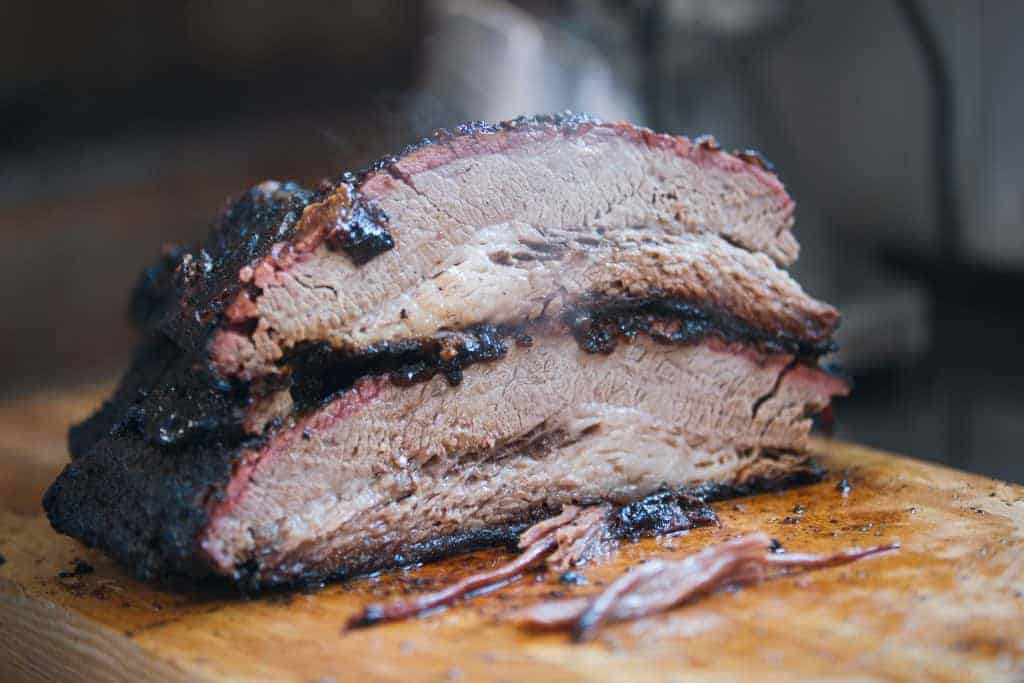
Central Texas
There are a number of unique styles in Texas low and slow. Starting with Central Texas, it’s all about beef, so BBQ means beef brisket. Meat is first smoked for 6 – 12 hours in a pit which is raised and lowered with ropes. They also enjoy low and slow cooking beef shoulder and mammoth-sized beef ribs. But Texans prefer absolutely no sauce and don’t ask for any.
East Texas
In East Texas, low and slow-cooked pork shoulder, pork butt, and pork ribs are the most popular as well as hot sauce and buns.
West Texas
In the West of Texas, cowboy-style barbecues use direct grilling rather than offset smoking, additionally, Southwest Texas locals have a strong taste for Mexican flavors with recipes such as Barbacoa.
Kansas City, Missouri
Kansas City, which has a historic meat district, has locals that prefer a variety of meats including pork, beef, chicken and sausages. They cook them all low and slow and smoked predominantly over hickory wood and then they smothered in a sweet, sticky molasses-tomato sauce.
Best Practices for Low and Slow Smoking
The first order of business in becoming a pitmaster is the ability to know the best temperature to smoke at, and when to remove your meat.
What’ not so obvious while watch food tv shows like BBQ Pit Masters, is that all the experts use a good digital meat thermometer to get a reliable temperature read in their smoker, and to know exactly when the meat is going to be most tender.
If you are smoking beef brisket, pork butt, fish, or sausage, it’s crucial to have one of these thermometers, alongside a cooking chart that shows optimum temperatures for the best results.
Welcome to the (meat smoking) danger zone
Since smoking uses much lower temperatures than other types of barbecuing, it’s essential to follow a few guidelines.
If meat remains at temperatures between 40 and 140° F harmful bacteria can quickly generate. You have up to 4 hours approximately before things become toxic.
Keep in mind this is incremental too. For example, if you have your meat in a smoker for 3 hours, and then let it rest for another hour, cumulatively you have reached the 4-hour limit. For your safety:
- Always thoroughly thaw frozen meat before adding it to the smoker
- Marinate your meat in the refrigerator and never reuse marinade.
- Smoke poultry to at least the USDA minimum recommendation.
- Make sure you remember the 4-hour window to ensure you and your guests’ safety.
Check out my article on the 4-hour rule in BBQ for a more information.
Tips for managing a long smoke
If you are new to smoking, it’s likely that 4-16 hours of cooking time likely presents a whole new group of questions that you just don’t encounter during other barbecuing.
The feared ‘stall’
Almost all rookies get worried when they first run into a barbecue “stall.†With guests on their way and a perceived abundance of time for your BBQ brisket, you get confused when your thermometer has been displaying the same temperature for the last 2 hours.
Avoid the common classic smoker mistake and try not to panic.
You don’t have to react like one of these rookies though. If this happens to you, understand that a low and slow barbecue stall is simply a natural process that happens when a brisket reaches 165 degrees. As your meat cooks, moisture is released and then evaporates, which cools your meat.
It can become disturbing because this process can cause your meat thermometer to stay fixed for hours. But your new knowledge of the stall process lets you relax and you’ll get finished meat in no time.
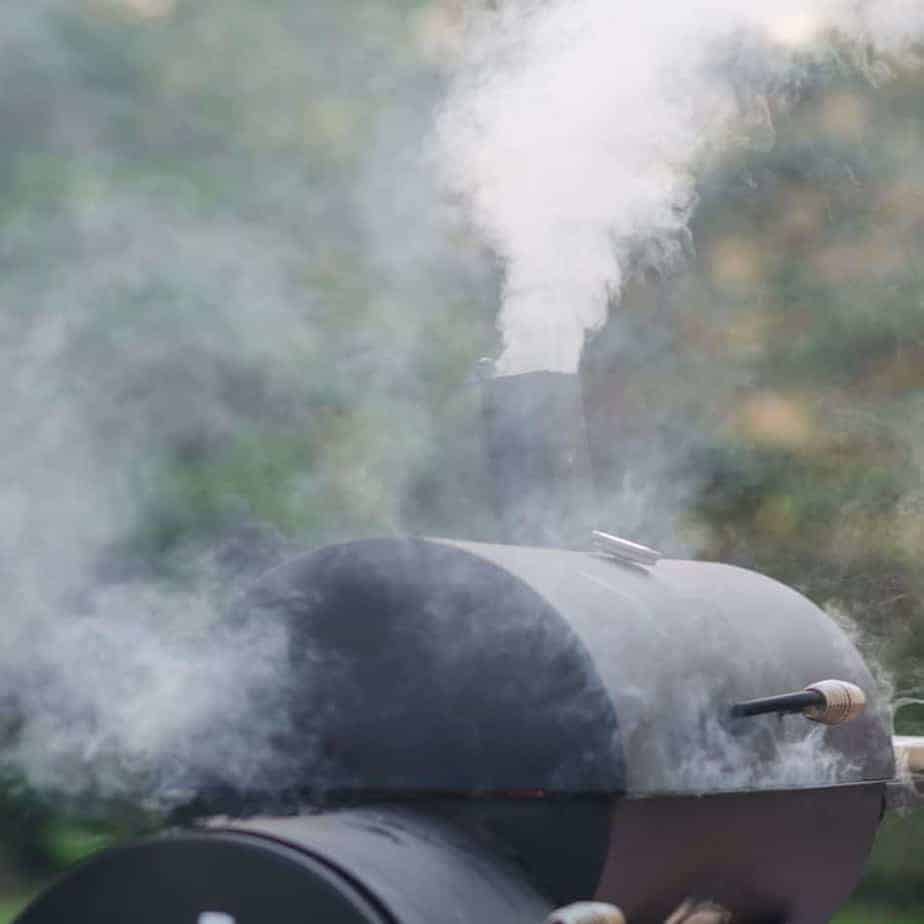
Don’t over-smoke the meat
Even though you need to cook some meats for 12 hours, this doesn’t automatically indicate that you need to keep adding in more smoke wood. Usually, after your meat has reached a temperature of 140 F degrees you will start to get diminishing returns from extra wood smoke.
Keep in mind to not use green wood or forget to control the fire temperature, as either of these can cause an excess of creosote (one of the chemicals in smoke) which results in a nasty bitter taste.
You Can Precisely Measure Your Smoker and Meat Temperatures
Keeping constant temperature and gauging exactly when to remove your meat from the smoker are two of the most essential skills to perfect if you want to cook a great barbecue.
You need to be consistently watching the internal smoker temperature, as well as the temperature in the center of your piece of meat.
Many popular thermometers (like the Thermoworks Signals) allow you to insert two temperature probes to monitor both these temperatures while connected to a WiFi unit which allows you to keep watch of the temperature from the inside of your house.
To do this, mount one probe slightly raised off the grill, near the meat to get an inside smoker temperature in the area where your meat is cooking.
Insert the other probe directly into the meat. Of course, if you’re cooking smaller foods like fish or shrimp, then this method won’t work.
For these smaller foods, instead, use an instant-read thermometer to check for internal temperature. Although some people will say you can tell how done something is by poking it, that’s not the case.
The Best Smokers for Hot and Fast Barbecue
Drum Smokers
Gateway drum smokers are all the rage when it comes to hot and fast barbecue. These drums have a vortex shape with adjustable intake valves that will easily help the internal temperature reach and remain at 300 degrees Fahrenheit. You can find an array of these smokers at numerous BBQ competitions across the country. They are infamous for cooking brisket or even ribs.
These drums can withstand temperatures of up to 1,000 degrees Fahrenheit, their features include:
- Multiple cooking levels
- A steel-plated cooking grate
- Removable fire basket
- An inside lid hook
- A custom thermometer from 50-500 degrees Fahrenheit
- Welded and adjustable air intake pipes
- Adjustable exhaust air pipe
- Welded steel handles
- A Caster wheel kit that is removable for easy transport
Check out the Gateway Drum Smokers website here.
These smokers have a price tag of nearly $800. This is probably a pretty big investment for just the “average Joe†wanting a BBQ monster in his own backyard. He might actually consider making his own. After all, these are just glorified drums with a nice paint job and a few bonus features, right?
Controlling the temperature inside your grill
Maintaining a stable temperature between 225-250°F can be a bit of a challenge. Especially if you are new to cooking with charcoal and managing a fire.
You need to make sure you don’t freak out when you see a temperature spike. Often you’ll over adjust and close all the vents, choking off the fire. Then you get stuck in a cycle of over adjusting.
While some people will just switch to a more set it and forget it style smoker like a gas or electric smoker, managing a charcoal smoker is actually very straightforward with a bit of practice.
Always get the smoker stabilized before adding your meat by letting it sit for 15 to 20 minutes with a thermometer away from direct heat until the temperature stabilizes.
Maintaining a full water pan in the barbecue chamber also helps to absorb heat and help moderate the temperature.
When temperature gets too high or too low, make very small adjustments to the valves and then monitor for several minutes before adjusting further.
The Best Smokers for Low and Slow Barbecue
Vertical Water Smokers
Vertical water smokers are the first go-to for beginners in barbecuing. By using a water pan above the heat source, which is typically charcoal, the cooking environment remains moist. A moist cooking environment is essential for low and slow barbecuing. They are quite affordable, yet they are limited on space and not recommended for those looking to cook large amounts at one time.
Check out the available vertical water smokers on Amazon.
Offset Smokers
If you’re able to source an offset smoker that does not have the common sealing issues that many tend to be manufactured with, you’ll have a great smoker to produce the richest slow and low cooked barbecue. These smokers work by having two chambers, one chamber known as the firebox creates the heat and smoke, which then travels sideways into the main chamber. They can cook larger amounts at once.
Check out the available offset smokers on Amazon.
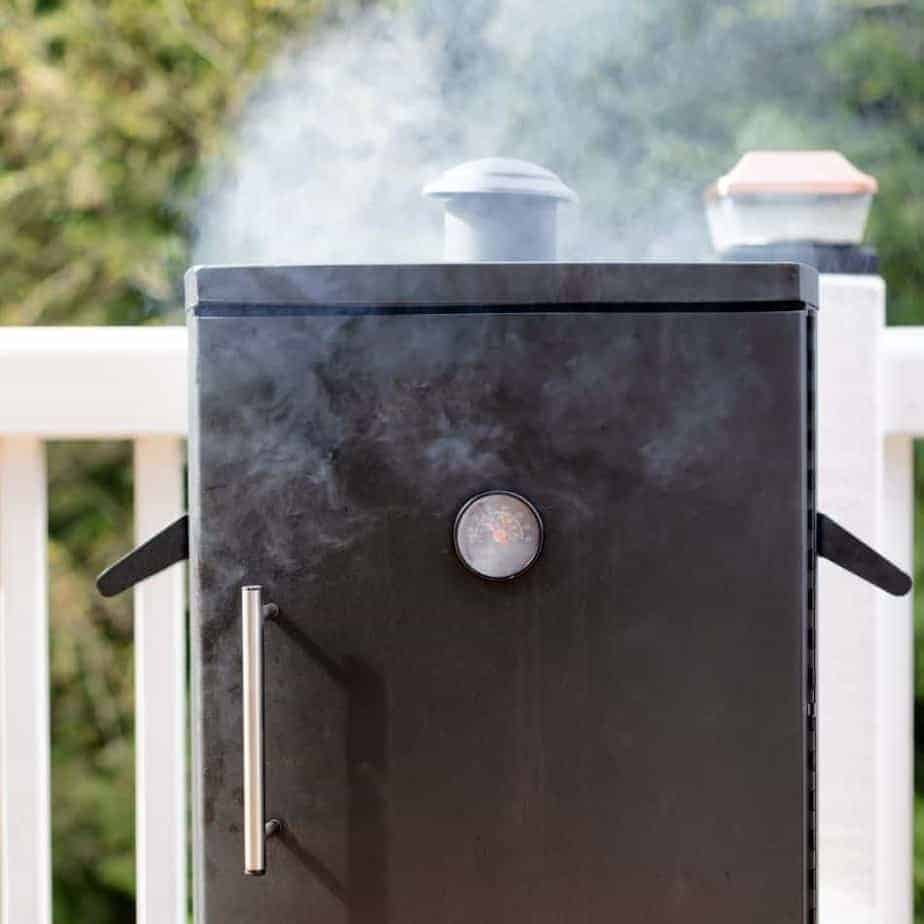
Box Smokers
You might have heard these being referred to as cabinet or vault smokers. These smokers come built with insulation in mind so that it is much easier to conserve the heat within the smoker. This means you’ll spend less time worrying about maintaining temperature and more time enjoying relaxation and socializing while your meat cooks slow and low to perfection.
Check out the available box smokers on Amazon.
Barbecue Fun-Facts
- Memphis, TN and Kansas City, MO both claim they are the barbecue capital of America. These two states hold a pretty huge feud between who hones the best barbecue methods and skills. Meanwhile, Lexington, North Carolina actually holds the title for “barbecue capital of the world.â€
- It’s a long-standing presidential tradition that each president holds a White House barbecue. This tradition first started with president Lyndon B. Johnson.
- While you might associate barbecue with the summer months, Americans love their barbecue so much that over 50% of them grill all year round even in the snow, according to the HPBA.
- Jan Greeff holds the record for the world’s largest barbecue that lasted over 80 hours to benefit the Juvenile Diabetes Research Foundation.
- The world’s largest barbecue was held in Estado De Nuevo Leon, Mexico and hosted over 45 thousand people.
- National barbecue day falls on July 13th.


